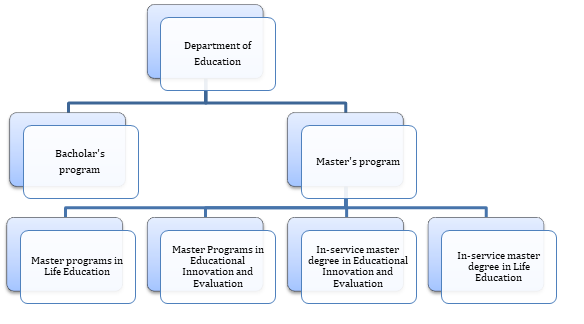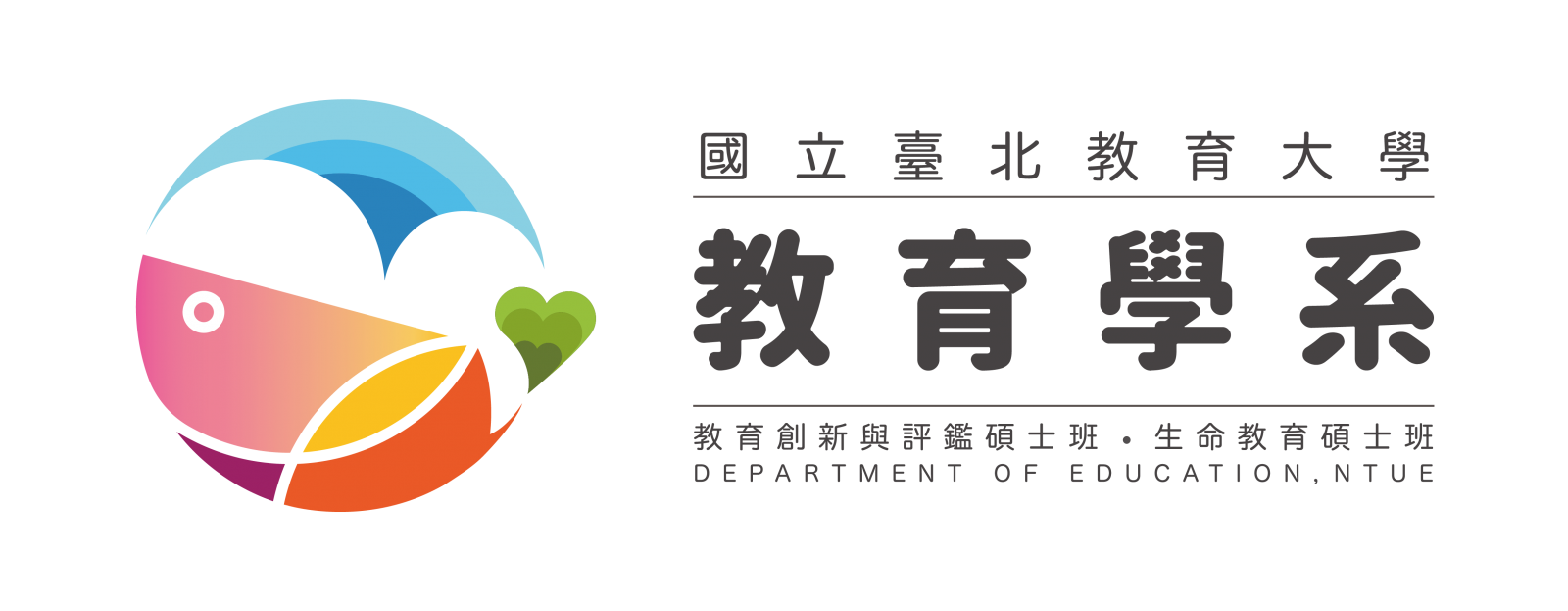History
History of department and Vision statement
Current Status of the Department
The Department of Education has benefited from the dedicated leadership of numerous chairpersons, including Ming-Ching Wu, Yu-Cheng Zhang, Shou-Gong Chen, Zong-Wei Li, Jin-Da Zeng, Yi-Xiong Cai, Ya-Wen Huang, Yu-Xiu Zhou, Li-Jun Wu, Chao-Sheng Hsu, Yu Wen Zhang, Bi-Xiang Chen, Wei-Wen Lin, and Yong-Ho Huang, along with the collective contributions of all faculty and students. Currently, approximately 2,000 alumni from our department are actively engaged in the field of education.
▋ Department structure
The Department currently consists of four undergraduate classes spanning all academic years. In addition, it offers four graduate-level programs, including the Educational Innovation and Evaluation program, the Life Education program, and evening in-service master's programs tailored for working professionals. Altogether, the Department serves approximately 300 students. The current Chair of the Department is Professor Hui-Fen Chen.

Fig. Structure of the Department of Education.
▋ Our features
The Department of Education is distinguished by several key features:
- Strong Faculty and Rich Teaching Resources
Our department is supported by a dedicated team of experienced faculty members and abundant teaching resources that contribute to high-quality instruction and academic excellence. - Comprehensive and Flexible Curriculum
We offer a diverse and well-structured curriculum that aligns with the latest national curriculum standards. In addition, the program provides opportunities for students to develop a second area of specialization, allowing for greater flexibility in career planning and professional development. These strengths significantly contribute to the cultivation of outstanding elementary school educators and research professionals. - Emphasis on Internationalization and Industry Collaboration
We place a strong emphasis on fostering international perspectives and strengthening collaborations with industry partners, enhancing our students' competitiveness in the job market. - Strong Student Identity and Active Engagement
Our students demonstrate a high level of identification with the department and actively participate in a wide range of extracurricular and co-curricular activities, contributing to a vibrant campus life.
▋ Our vision
Rooted in a legacy of educational excellence passed down through generations, our department is committed to preserving its rich academic culture while remaining responsive to the evolving landscape of education. We aim to:
• Deepen engagement with relevant educational industries
• Broaden students’ global outlook
• Cultivate education professionals equipped to meet the demands of a changing human resources structure
• Strengthen our graduates' employability and societal contribution
History of the Department
▋ Founding
Established in August 1987, the Department initially comprised several divisions, including Special Education for Children with Intellectual Disabilities, Fine Arts Education, Physical Education, and Counseling. Since its founding, the Department has produced approximately 2,000 graduates, many of whom are actively engaged in various educational roles.
▋ Departmental Reorganization
Between 1991 and 1998, each of the aforementioned divisions gradually became independent departments, leading to their separation from the original structure. In 1999, the Department was reorganized into two divisions: the Administrative Division and the Curriculum and Instruction Division.
▋ Holistic Talent Development in Education
Since 2000, the Department has ceased assigning students to specific divisions across their four years of study, reflecting a shift toward the cultivation of well-rounded professionals in education. In 2004, the Department was renamed the Department of National Education to reflect this broader focus.
▋ Expansion into Related Educational Fields
In 2009, the Department was officially renamed the Department of Education, marking an expansion of its academic and professional scope. This transformation opened up diverse career pathways for graduates, including:
• Textbook authorship and editing of children's books and publications
• Development of educational software and instructional media
• Planning and administration for daycare centers
• Educational training and instructional design
• And other education-related professions
History of the Graduate Programs
▋ Establishment
In 2003, the Department began admitting students into its master’s degree programs, marking a significant milestone in its academic development.
▋ Launch of the Innovative Master’s Program
In 2006, the Department established the Master’s Program in Educational Business Innovation (commonly referred to as the Innovative Master’s Program), designed to carry forward the Department’s strong academic culture in national education. This program was specifically created for in-service educators attending evening classes.
▋ Introduction of the Kinmen Master's Program
Also in 2006, in response to the shortage of graduate-level professional development opportunities for educational personnel in the Kinmen region, the Department launched the Master’s Program in Educational Administration for In-Service Professionals (Kinmen Program). This initiative aimed to support the continuing education and professional growth of educators based in Kinmen.
▋ Program Name Alignment with Departmental Renaming
In 2010, following the official renaming of the Department, the titles of the graduate programs were updated accordingly. They were renamed to the Master’s Program in Educational Innovation and Evaluation and the In-Service Master’s Program in Educational Innovation and Evaluation, ensuring consistency with the Department’s revised identity.
▋ Adaptation to Institutional Transformation and Societal Needs
In 2011, as part of the university’s broader institutional transformation, the Department integrated with the Institute of Life Education. This merger led to the introduction of two new programs: the Master’s Program in Life Education and the In-Service Master’s Program in Life Education, further expanding the Department’s offerings to align with evolving societal and educational needs.

